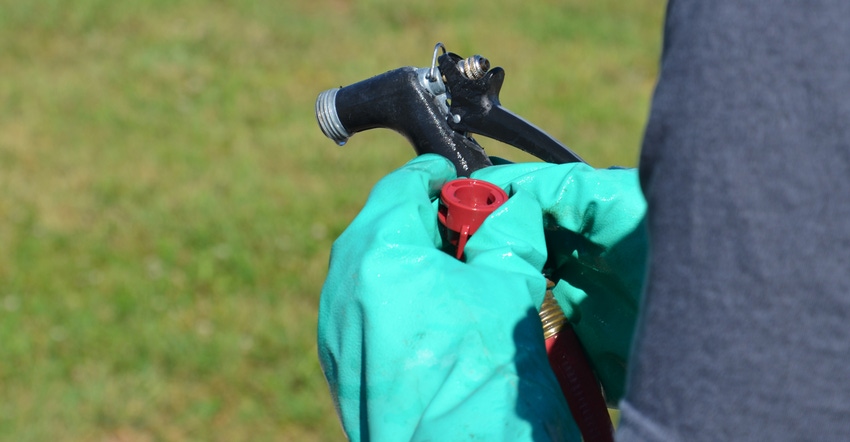
If you’re working with Pete Illingworth and waiting to go to the field to plant in the spring, allow time for him to inspect and clean the spray nozzles that apply herbicide behind each planter row. Illingworth won’t start planting a new field where he is also applying herbicide until he checks and cleans each nozzle to make sure there is no chance the nozzle will plug because it hasn’t been cleaned properly.
“It really doesn’t take that long to do, especially on a planter,” says Illingworth, mechanic and crew member at Purdue University’s Throckmorton Research Center, located near Romney.
He typically finds that over time, material left behind from the spray mixture can begin to accumulate in spray tip nozzles. “My job is to take the time to remove each nozzle and clean it out so that I get good coverage when I spray,” he notes.
Get more INSIGHT: Download Best Practices for Spraying now!
When Illingworth planted an Indiana Prairie Farmer and Purdue-Throckmorton test plot recently, he applied herbicide during the planting trip. He carries the spray mixture in saddle tanks on the tractor. This particular plot will compare five seeding rates for two different hybrids of corn. The object is to determine the economic optimum seeding rate. Economic optimum may be different than agronomic maximum, which is the highest yield that can be produced in the field.
Bob Nielsen, a Purdue University Extension corn specialist, is the official sponsor for the plot. Karen Mitchell, the Tippecanoe County Extension ag educator, will also assist during the season on the plots. She also helped record weights during harvest in 2016.
Even application
Good, even coverage was needed in this large-scale plot, Illingworth says. Giant ragweed seed from another field used for weed science trials is putting considerable weed pressure on the field. Illingworth applied several products, including atrazine, off the planter as he planted.
“My goal is to get good enough coverage that we don’t need to come back with a post[emergence] application,” he says. Both hybrids used in the trial are tolerant to Liberty and glyphosate, so either one could be used as a postemergence treatment if too many weeds escape.
“We’re really hoping we don’t need a postemergence treatment with Liberty,” Illingworth says. He intends to scout the field closely, but is hopeful that with the herbicides applied at planting, there will be enough residual activity to keep the field clean without coming back with a post application.
Illingworth also operates a high-clearance Miller sprayer when he’s spraying nonresearch fields, or if he does have to make post applications on plots like this one. It’s equipped with many more nozzles than are located behind each row of the planter.
“It’s equally important to keep nozzles clean on the big sprayer,” he says. “I’m also careful to rinse the sprayer out properly when changing chemicals. I triple-rinse and spray rinsate out in the field over the crop.”
About the Author(s)
You May Also Like




